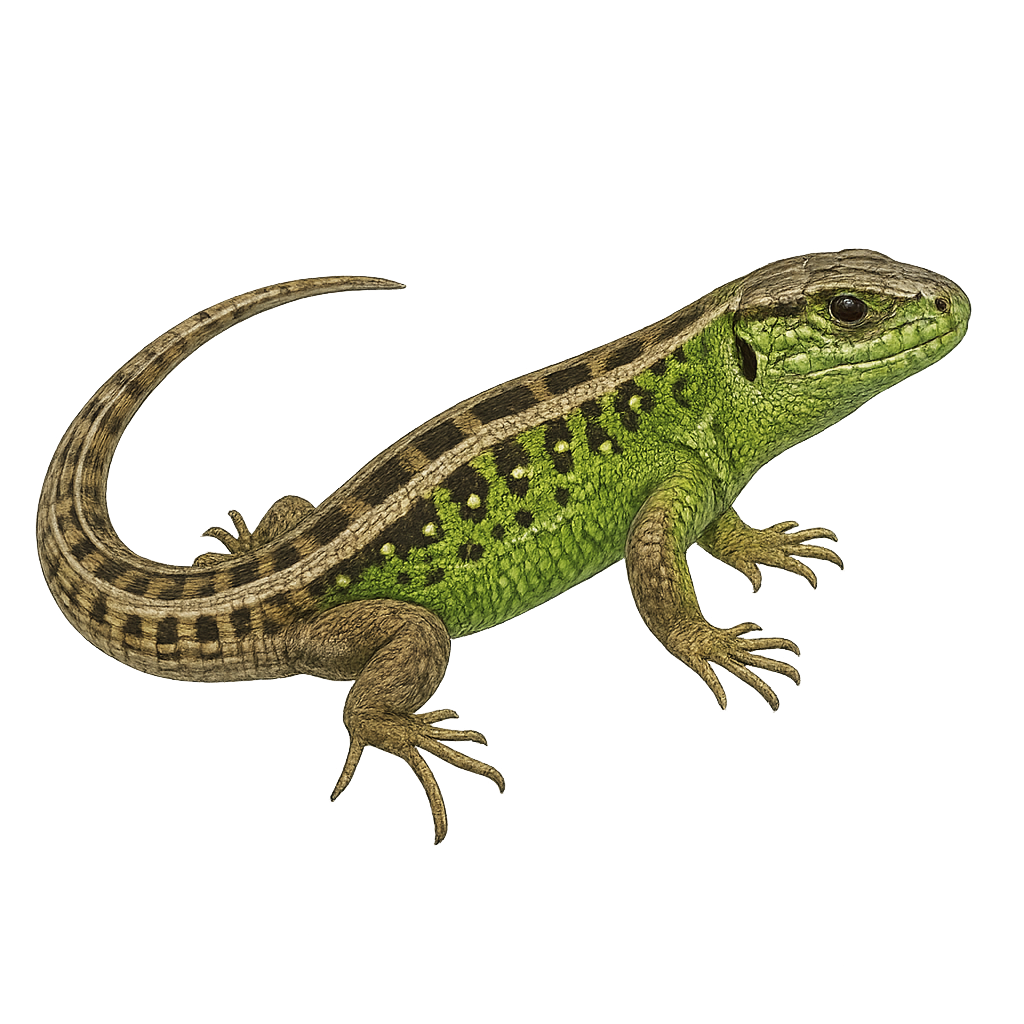Your wildlife photography guide.
Explore the sand lizard in detail, study its behavior, prepare your shots.
Where to observe and photograph the sand lizard in the wild
Learn where and when to spot the sand lizard in the wild, how to identify the species based on distinctive features, and what natural environments it inhabits. The WildlifePhotographer app offers tailored photography tips that reflect the sand lizard’s behavior, helping you capture better wildlife images. Explore the full species profile for key information including description, habitat, active periods, and approach techniques.
Sand lizard
Scientific name: Lacerta agilis

IUCN Status: Least Concern
Family: LACERTIDAE
Group: Reptiles
Sensitivity to human approach: Suspicious
Minimum approach distance: 3 m
Reproduction period: March to May
Incubation: 30–45 jours
Births: March to May
Habitat:
grasslands, sand dunes, forest edges
Activity period :
Active during the day when temperatures are favorable, often seen basking in the sun.
Identification and description:
The sand lizard, Lacerta agilis, is a medium-sized reptile, typically measuring between 15 and 25 cm in length, including the tail. Its coloration ranges from brown to green, with spotted patterns that help it blend into its surroundings. Males often display a brighter green hue, especially during the breeding season. This lizard is primarily found in Europe, favoring open habitats such as grasslands, sand dunes, and forest edges. Active during the day, it basks in the sun to regulate its body temperature. It feeds on insects, spiders, and occasionally small invertebrates. Although its conservation status is concerning in some areas, it remains relatively common in others.
Recommended lens:
Macro – adjust based on distance, desired framing (portrait or habitat), and approach conditions.
Photography tips:
When photographing the sand lizard, choose sunny days when it is more active. Approach slowly to avoid startling it and use a macro lens to capture the details of its skin and distinctive patterns. A tripod can be useful for stabilizing your camera, especially if using a telephoto lens. Try to photograph the lizard while it is basking in the sun, as it will be less likely to move. The natural light of the morning or afternoon is ideal for achieving vibrant colors and soft shadows.
The WildlifePhotographer App is coming soon!
Be the first to explore the best nature spots, track rutting seasons, log your observations, and observe more wildlife.
Already 1 439 wildlife lovers subscribed worldwide

